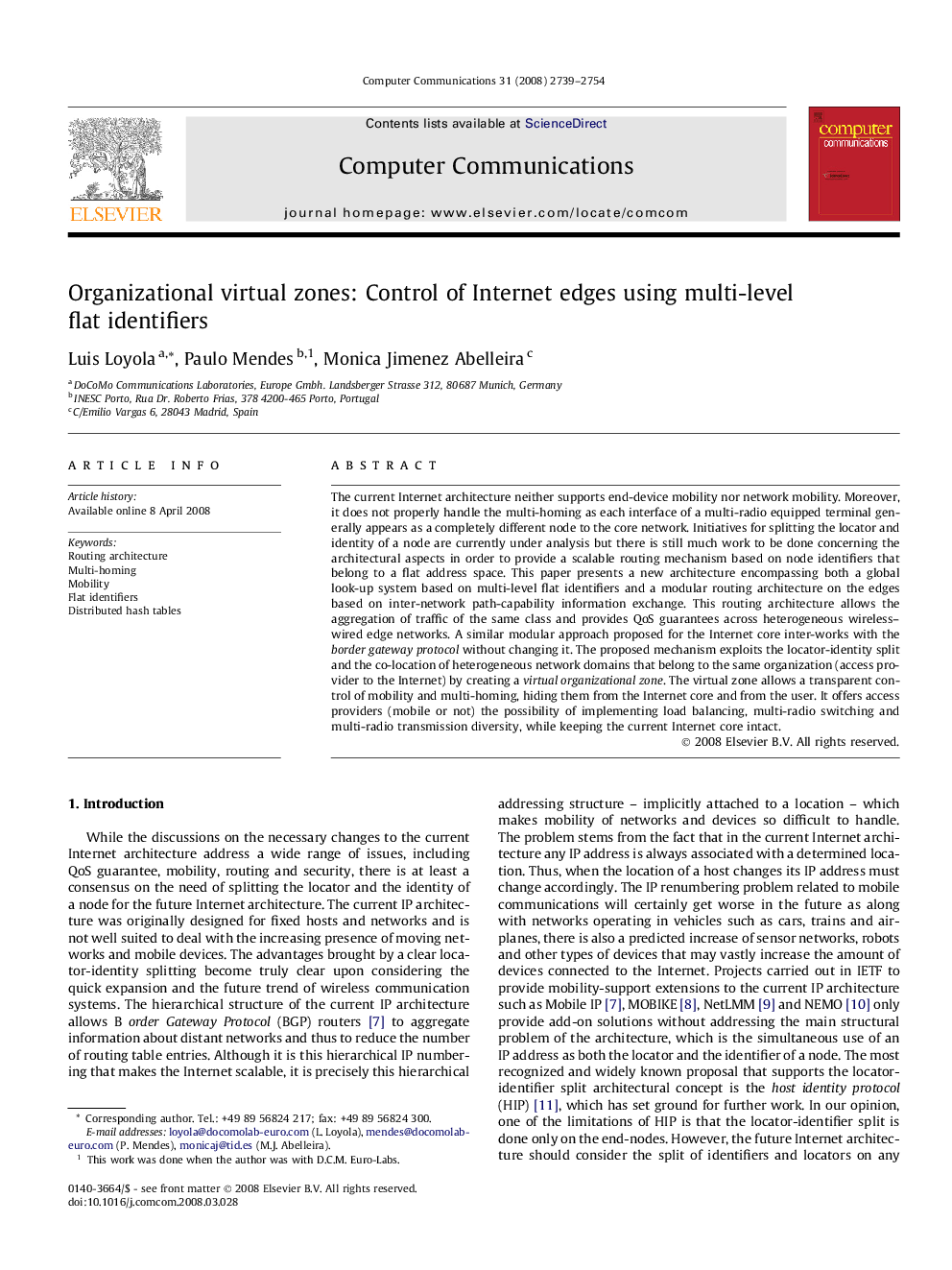| کد مقاله | کد نشریه | سال انتشار | مقاله انگلیسی | نسخه تمام متن |
|---|---|---|---|---|
| 449483 | 693674 | 2008 | 16 صفحه PDF | دانلود رایگان |

The current Internet architecture neither supports end-device mobility nor network mobility. Moreover, it does not properly handle the multi-homing as each interface of a multi-radio equipped terminal generally appears as a completely different node to the core network. Initiatives for splitting the locator and identity of a node are currently under analysis but there is still much work to be done concerning the architectural aspects in order to provide a scalable routing mechanism based on node identifiers that belong to a flat address space. This paper presents a new architecture encompassing both a global look-up system based on multi-level flat identifiers and a modular routing architecture on the edges based on inter-network path-capability information exchange. This routing architecture allows the aggregation of traffic of the same class and provides QoS guarantees across heterogeneous wireless–wired edge networks. A similar modular approach proposed for the Internet core inter-works with the border gateway protocol without changing it. The proposed mechanism exploits the locator-identity split and the co-location of heterogeneous network domains that belong to the same organization (access provider to the Internet) by creating a virtual organizational zone. The virtual zone allows a transparent control of mobility and multi-homing, hiding them from the Internet core and from the user. It offers access providers (mobile or not) the possibility of implementing load balancing, multi-radio switching and multi-radio transmission diversity, while keeping the current Internet core intact.
Journal: Computer Communications - Volume 31, Issue 11, 15 July 2008, Pages 2739–2754